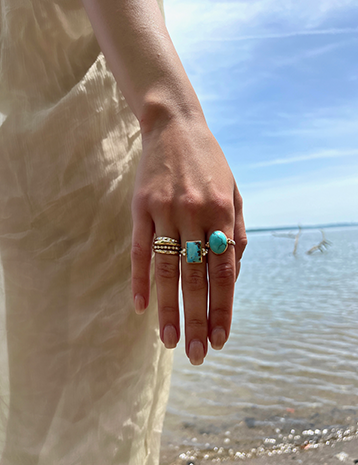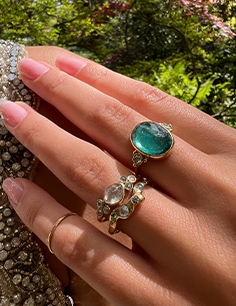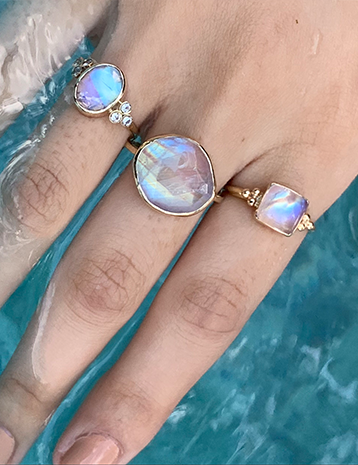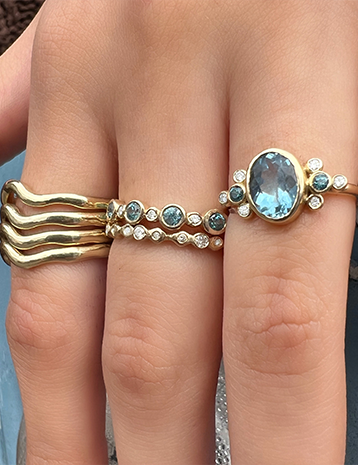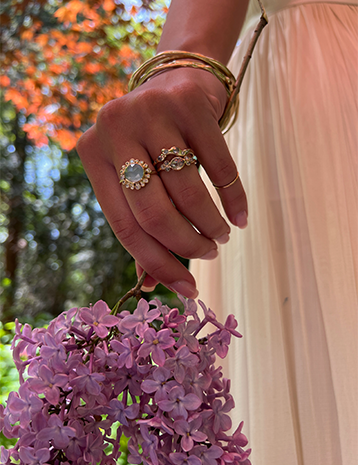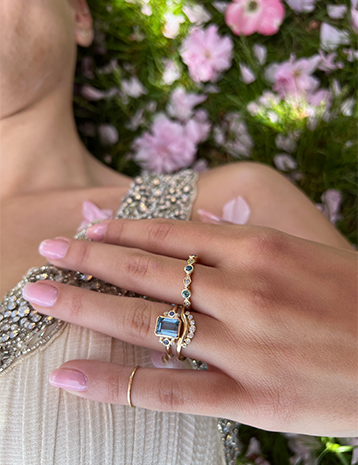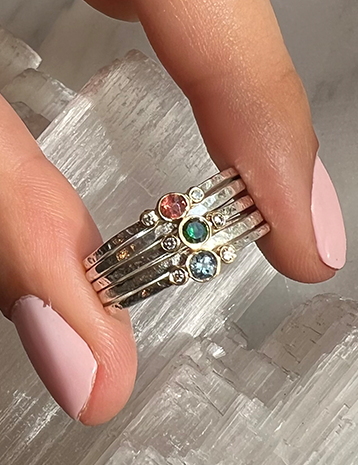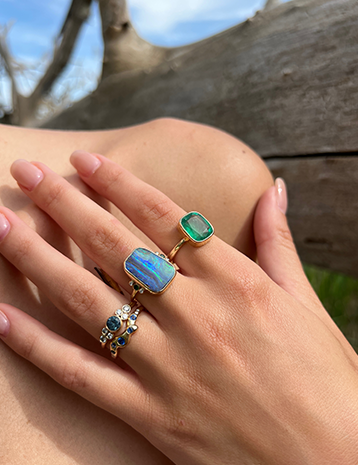Six Unique Features and Benefits of Handmade Rings and Jewelry
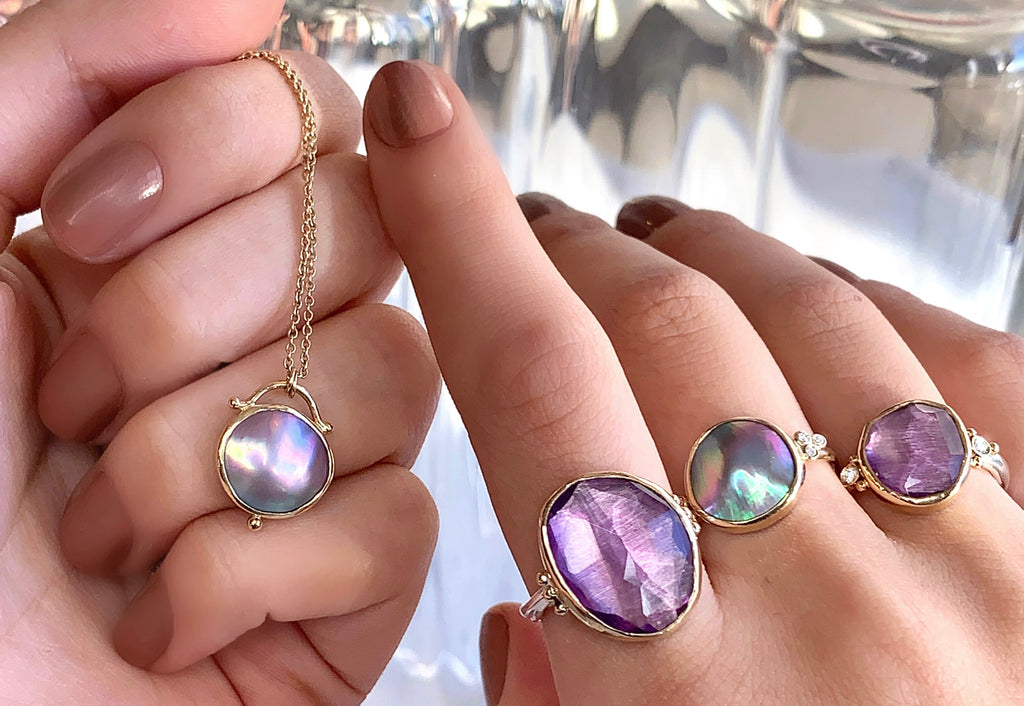
Just about everyone appreciates a stunning piece of jewelry. But there are so many unique features of handmade jewelry that go beyond just the first impression. From the artisanal design and execution to the high-quality materials and special touches, learning more about the unique features of handmade rings and jewelry will surely increase your appreciation for each piece.
Each Piece is Naturally Unique
Custom handmade jewelry is created by hand, without the use of standardized machines. This means each ring, necklace, or bracelet is original and cannot be replicated. Additionally, custom jewelry made with gemstones will naturally vary from stone to stone. Each piece will have slight variations in the stone’s colors, features, and shape.
Ultimately, whether you’re purchasing an opal ring with a hammered gold band or a morganite necklace finished with beads, each piece is sure to look slightly different and completely unique. Handmade jewelry gives you the peace of mind that each handmade ring or custom piece is truly one of a kind and irreplaceable.
Jewelry That Stands Out As a True Work of Art
Handmade jewelry leaves a lot of room for both creativity and precision. While machine-made jewelry is created in molds to look identical from piece to piece, handmade jewelry is created by an artist who is following their eye and instincts.
The process of creating handmade jewelry is a significant time commitment, as the artist works on each earring, bracelet, or necklace until it satisfies their artistic vision. They work to highlight the natural beauty of each stone by letting the coloring, tones, and organic shape guide them. This gives them much more room to be creative when compared to a standardized jewelry operation. The end result is a piece of art that truly suits the gemstone and materials used. Learn more about the different types of stones used by Emily Amey and their unique features in this gem guide.
Naturally Environmentally Friendly and Sustainable
The process of procuring materials to create jewelry can range from responsible and environmentally friendly to reckless. A report by Human Rights Watch in 2018 analyzed the sources of the 13 leading jewelry houses, including Rolex, Cartier, and Bulgari. The report found that many of these jewelry houses were subpar when it came to tracking the sources of their gold and gems, including the human rights risks associated with these mining techniques.
By contrast, handmade jewelry operations work on a much smaller and more personalized scale. By nature, the artisanal aspects of handmade jewelry mean that artists are picky about selecting only the highest quality stones. This gives them much greater control over the sources they use to get their materials and greater insight into these operations. Artists are often close friends with their suppliers and are able to track the process used to procure the materials and thus the environment and ethical impact of these sources. Artists like Emily Amey aim to work with recycled fine materials where possible as well, to ensure each piece is not only beautiful but completely ethical, sustainable, and guilt-free.
Better Quality Across Products
Any operation once expanded on a large scale, loses quality. This is just as true in the jewelry world as in any other business. Customers may notice that their once favorite brand starts to lose that high-quality aspect once the business grows into a major operation.
This is not a problem in handmade jewelry operations, as these custom handmade pieces of jewelry are done by an artist. The process can’t be sped up by machinery and will essentially stay the same, no matter how far and wide the jewelry is sold. At the end of the day, there is a person behind each handmade ring with gemstones or a pair of custom earrings – not a machine.
More Affordable Fine Jewelry
It may seem counterintuitive to think that a custom, handcrafted piece of jewelry would be more affordable than mass, machine-produced jewelry. But, this is often the case! When you evaluate the quality of materials, the artisanal design, and the time put into each piece, you’ll quickly see that handmade jewelry is a much better value.
This is not to say that handmade jewelry is inexpensive! Each piece is created with handpicked materials and shaped into its ideal form by an artist. This results in a fine piece of jewelry and art that is priced accordingly. But when comparing that quality and price tag with what you may pay for a standardized necklace or pair of earrings, you’ll quickly notice that the handmade piece is overall much better in value.
Support Passionate Local Business Owners
Small, local businesses are what make our communities, and our country feel like home. The satisfaction of supporting a member of your community is always rewarding. And not only are they part of our cultural fabric, but they also create jobs and opportunities for their local communities. According to the Small Business Administration, local businesses create 1.5 million jobs each year and account for 64% of new jobs.
In handmade jewelry, these small business owners and artists are often women. Emily Amey is one of those women who have taken the brave step of believing in themselves and opening their own business with their own vision. Choosing to buy unique, handmade jewelry means choosing to support independent women and artists who truly love what they do every day.
These six unique features of handmade jewelry are sure to increase your appreciation and understanding of the time, effort, and creativity that is poured into each piece. From sustainability and ethical sourcing to supporting the dreams of local artists and small businesses, handmade jewelry is about so much more than just the final product. Whether it's a dangling pair of Australian Opal drop earrings, a Watermelon Tourmaline ring, or a 14k Mabe Pearl necklace, you can now appreciate even more of the unique features and artistic expression that makes handmade jewelry so stunning.


